Combs from Kemet (and Ghana)
I spent the best part of 3 years researching African hair combs. And just when I thought that I knew everything there was to know and had found every possible parallel for the combs from Ancient Egypt, I came accross a number of very interesting combs in the National Museum in Accra, Ghana (below).
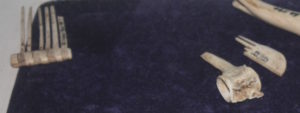
The objects above were excavated by a British archaeologist Thurston Shaw at the site of Dawu. The rubbish dump where they were found was dated to between the mid-seventeenth and eighteenth centuries CE. This coincided with the time that the town was absorbed into the Akwapim Empire. The comb on the left is important because it is almost identical to the combs that were made by African people who had been enslaved and transported to the US. The comb, or decorative piece, in the middle on the right, struck me because it is almost identical to a comb that is housed in the Fitzwilliam Museum, Cambridge. The difference being that the Cambridge comb (below) is around 6000 years old and from Kemet.

It isn’t possible to say that two combs that are 6000 years apart are directly connected. We can only make this assumption if we can show continuity through time. However, until I saw the Dawu comb I had failed to find any parallels for the comb above apart from those in Ancient Egypt. It is possible that the two combs were used as decoration for the hair, or that they served a particular purpose in styling.
A better understanding
By looking for parallels within other African cultures we are able to obtain a better understanding of how items that relate to hair were used in Kemet. Ethnographic photographs from the late nineteenth and early twentieth centuries show that combs were used for multiple purposes. This includes combs being used as status symbols, as decoration for the hair, and as tools; which accords with the evidence from Ancient Egyptian burials. There are also parallels in the decorative techniques that were used in both Kemet and West African cultures. The incised circular decoration on the teeth of the Dawu comb (below right) was also used in Ancient Egypt.

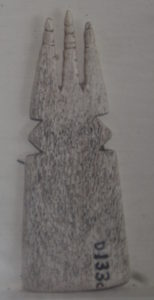
A good reminder of the variety of different types of comb used for African type hair
I started this post with an image that I took when the Origins of the Afro comb exhibition was on. Being a curator allows you to display objects that you have always wanted to see together and which are not typically shown in that way. For me one of the most exciting things about curating that exhibition was being able to display a 1970s Black power comb next to an Ancient Egyptian comb that was found in a grave at the cemetery of Abydos.
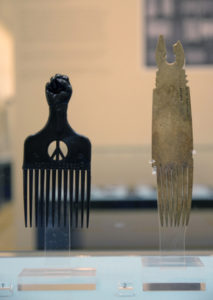
- In Predynastic Kemet, combs were used as a status symbol and were also worn in the hair. This is a common practice in other African cultures.
- The earliest combs were in the form of a ‘pik’.
- The symbols on the handle are often in the form of an animal or part of an animal; perhaps suggesting a religious or power connection.
Once again we can’t make a direct connection between the two combs above, but in terms of their form they are the same. And it is worth noting that we do not find this type of hair pik in any ancient cultures outside of Africa. Even William Matthew Flinders Petrie, who I mentioned in a previous post, noted that there were no European parallels for this form of comb. He wrote the following in his 1927 publication Objects of Daily Use:
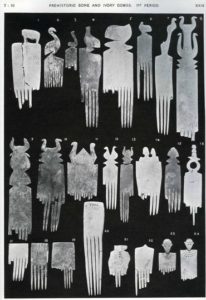
The early European combs, of bronze age and onward, differ entirely from the Egyptian examples, being always single edged and run backed
Combs with shorter teeth
I was pleased to be reminded, by the Dawu combs, that many African combs are not in the form of a ‘pik’. Of course combs with longer teeth are only appropriate for specific styles of hair and in the same way that not everyone with African type hair uses a ‘pik’ today, the same is true of earlier periods.
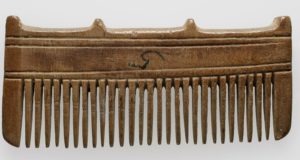
From around 4000 years ago the form of comb illustrated above was commonly used in Ancient Egypt. The main difference between those from Kemet and ancient European combs is the width of the gaps between the teeth. Those from Africa tend to have more space, presumably because the users and makers of combs were aware that African type hair can be fragile and prone to breakage.
*Please share your thoughts and comments below*

